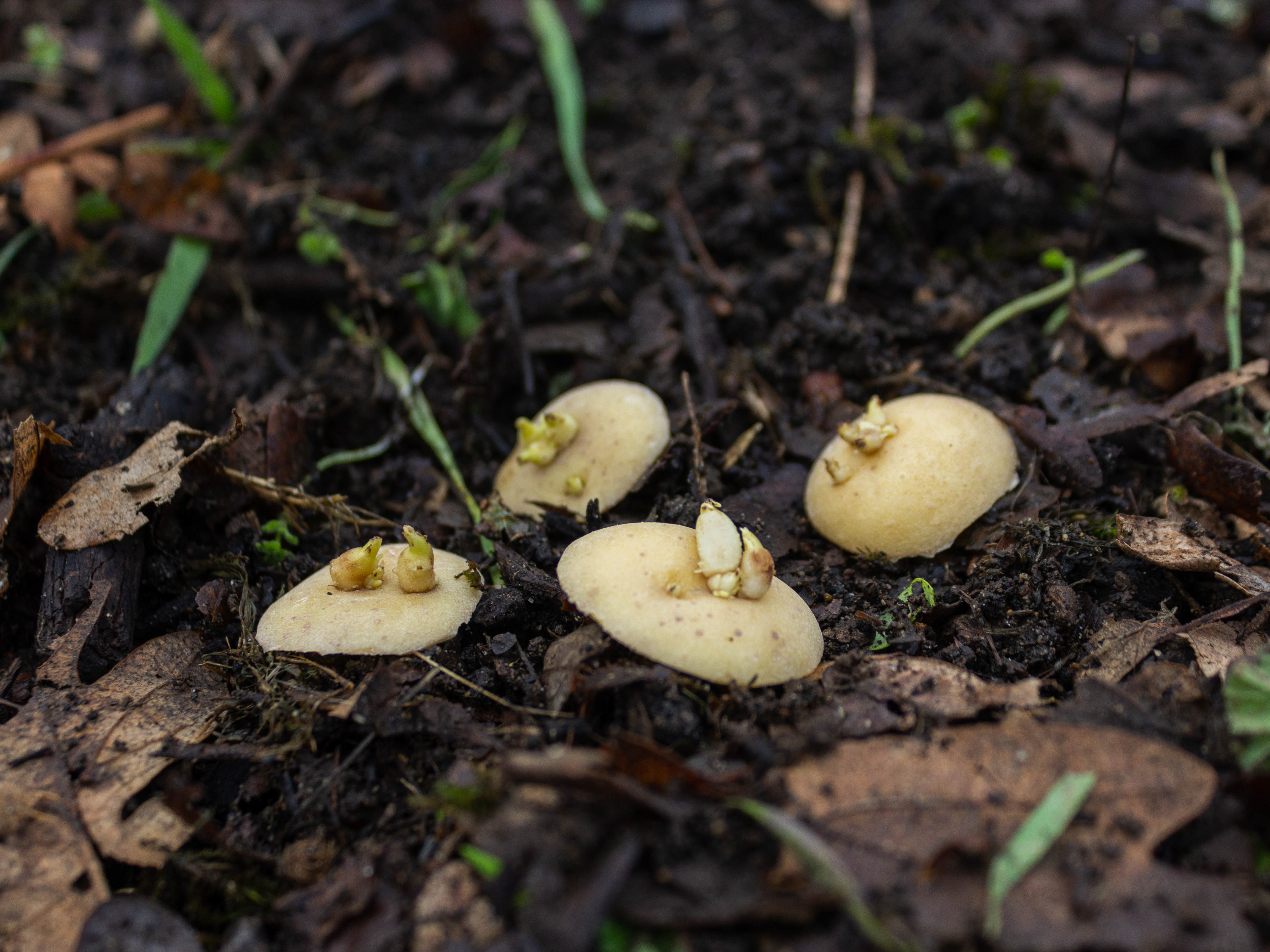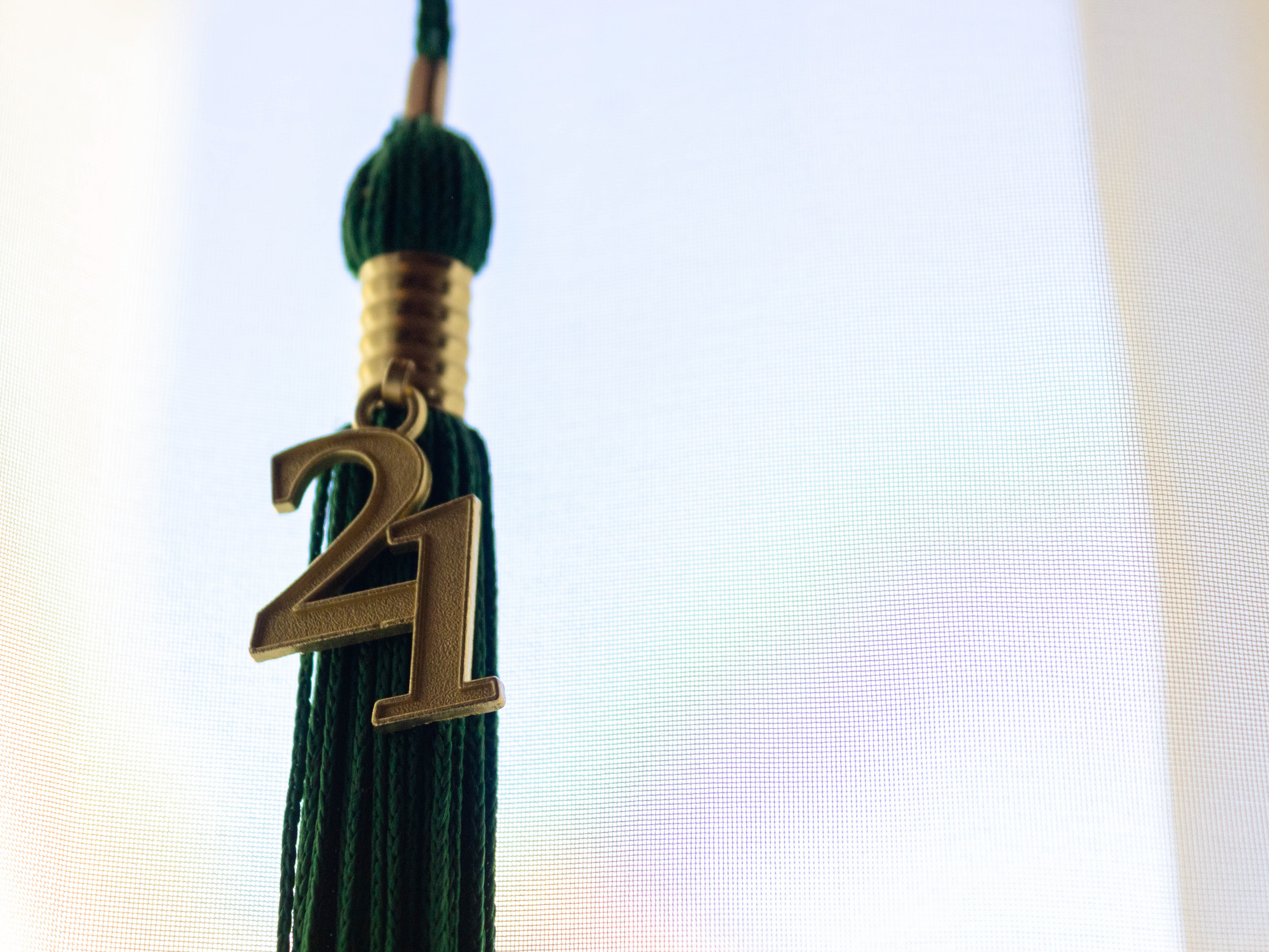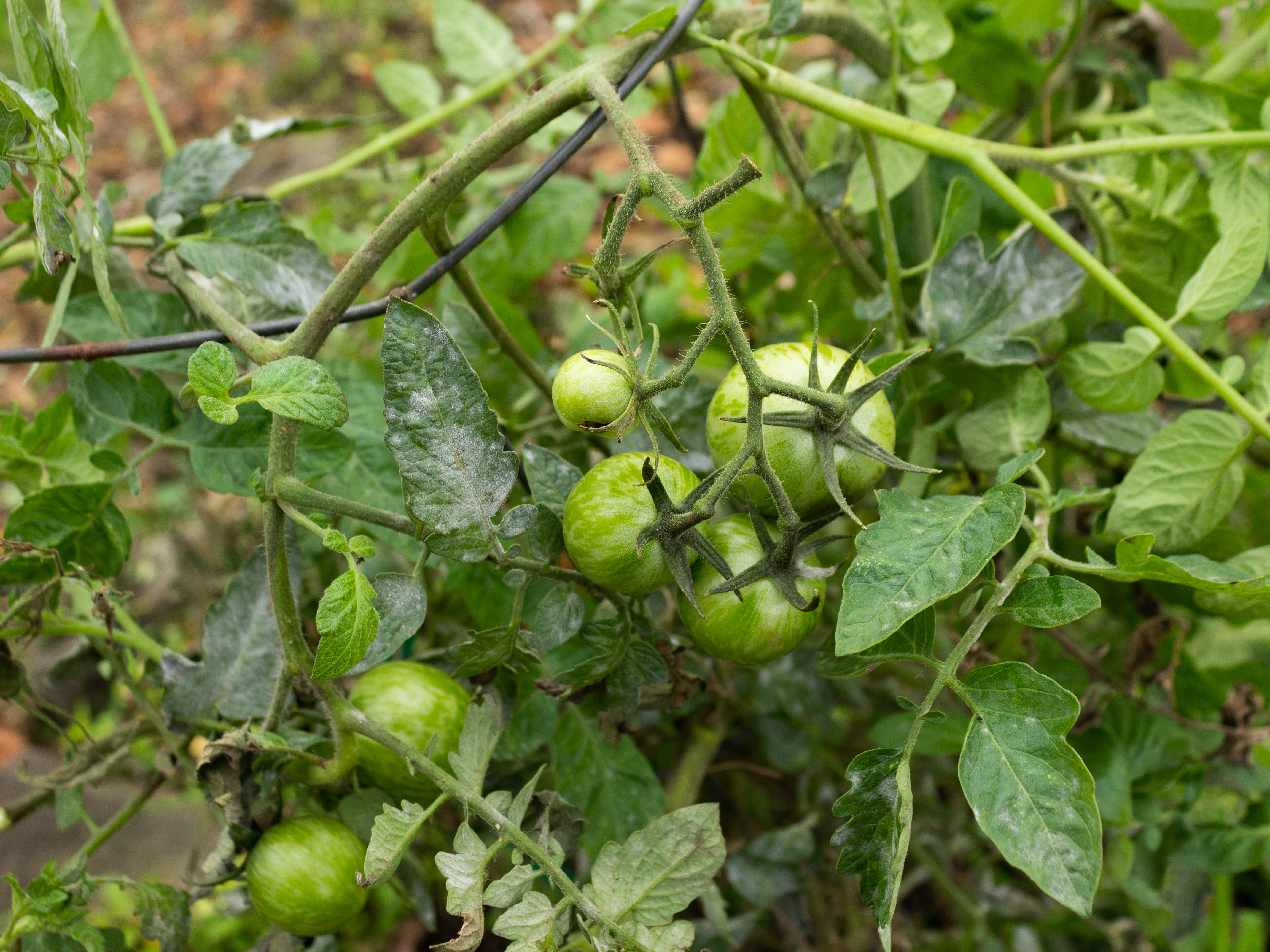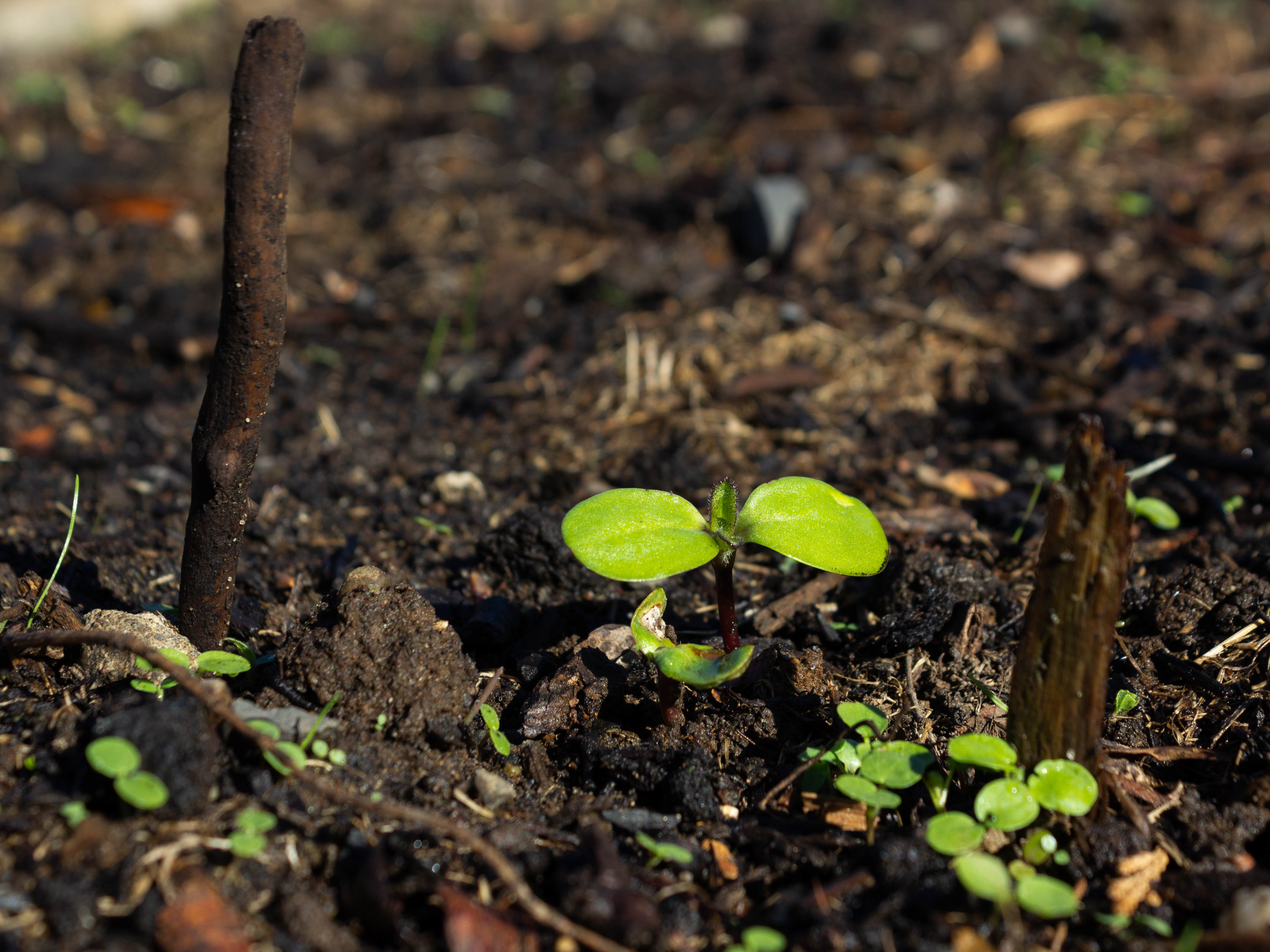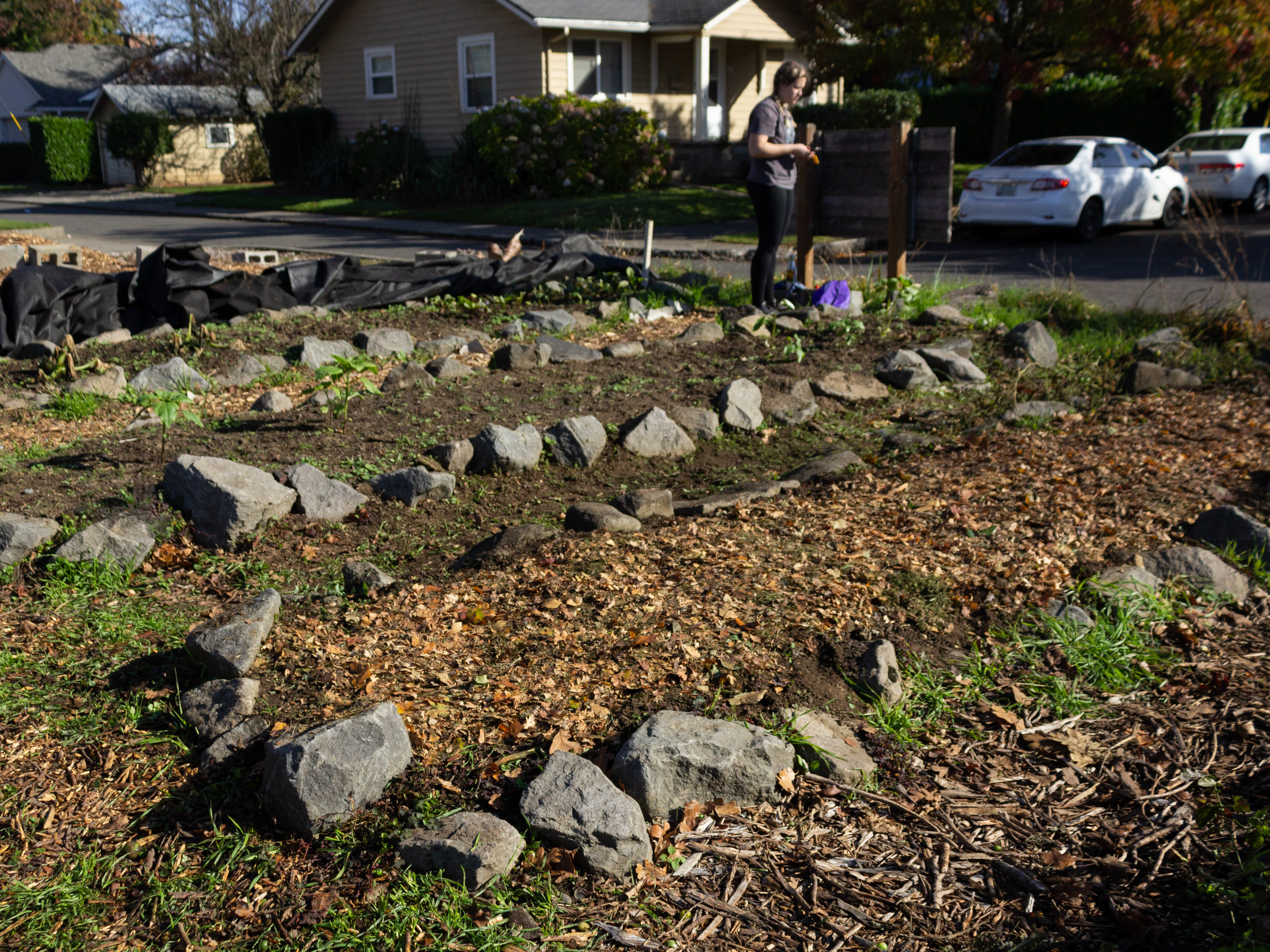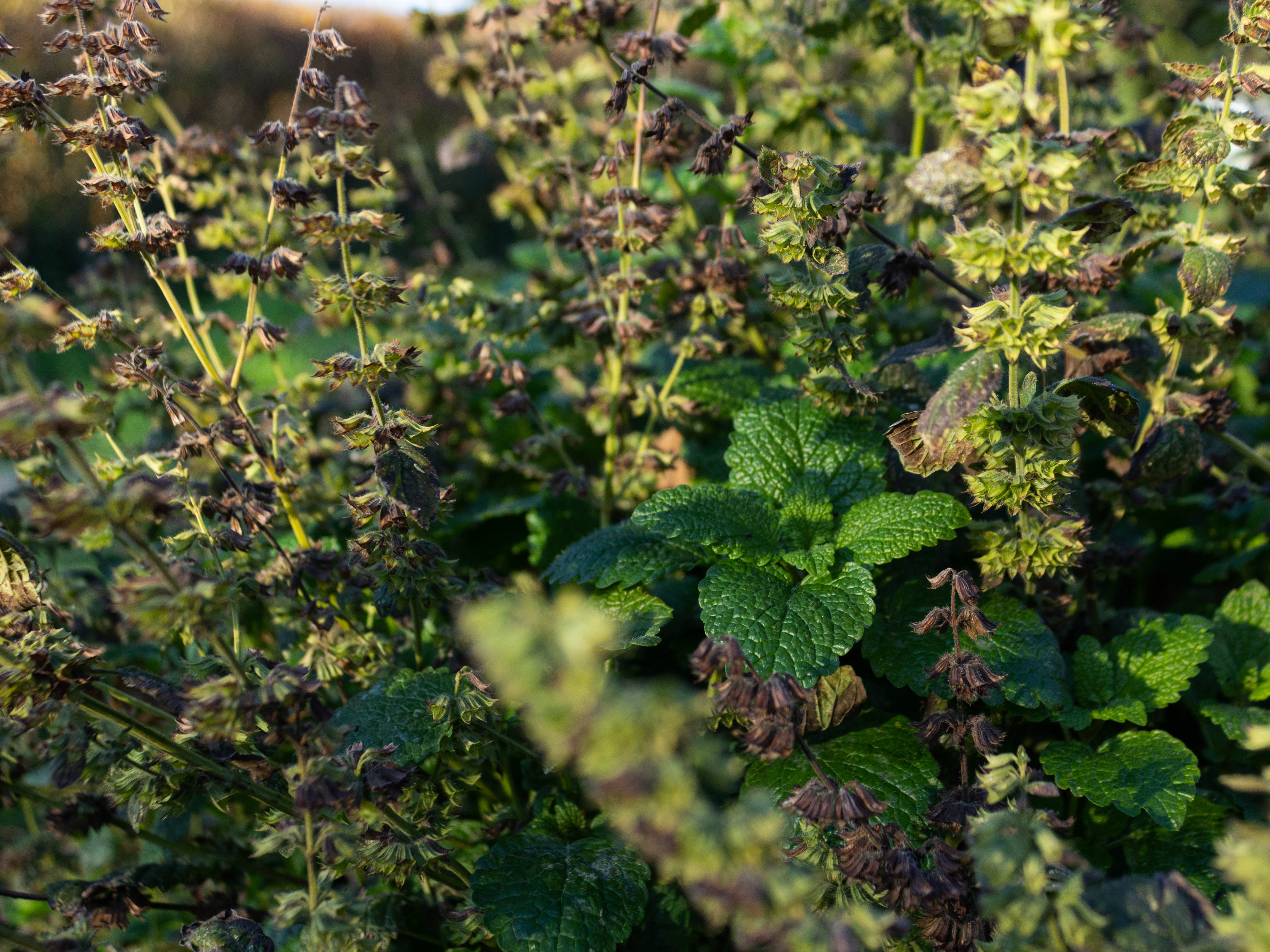I wasn’t able to get out to the garden over the weekend because of rainy weather, but going during the afternoon in the middle of the week made for a nice change of pace. Nothing yet in the lettuce and spinach bed, but the sunflowers are really popping up! Josie and I just focused on tending to the bed with pumpkins and beets – we pulled weeds and I thinned the beet sprouts. The thinning process this time around was much less emotionally distressing than my previous experiences, probably in part because I am not a huge fan of beets myself. But I did save the biggest sprouts that I pulled and put them back in the ground in between the two original rows to see if they would keep growing. Either way, we should still have a pretty good beet crop. Hopefully the cold doesn’t stress them out too much. I’m a little worried about the wind. The sprouts seem pretty exposed now that they’re standing alone and since they’re still so small, they seem like they’re having a hard time staying upright as it is. I wonder if adding a layer of mulch would be helpful, but I also don’t want mildew to become a problem if it traps too much moisture. I’ll just have to keep a close eye on them.
There was a quote from one of the readings I had last week that really made me reflect on gardens. In his essay “The Trouble with Wilderness”, William Cronen wrote, “Wilderness tends to privilege some parts of nature at the expense of others.” This was written in the context of an analysis of the meaning of the word “wilderness” and how it is a human-derived concept containing centuries of assumptions and implications, the opposite of what we commonly consider wilderness to be, at least at a superficial level. This line in particular was highlighting how not everything natural is considered “wilderness” – it’s the big stuff that’s romanticized and idealized as “wilderness”. The postcard-perfect mountain ranges, forests, and waterfalls that are awe-inspiring in their scale. The far-off places, the settings for indie films, the subject of award-winning National Geographic-esque photography. The national parks, sunrises and sunsets and their majestic colors, and beaches that make for eye-catching Instagram posts. In short, wilderness is an example of an Other, something vastly different from us humans.
Cronen points out that this idea of wilderness has been entirely cultivated by people, like advertising to get people to see nature in a certain light and want it. And as this particular message has been refined over many, many years it is very effective and pervasive. While I can’t help but subscribe to this traditional view of wilderness myself, I do think it is possible to find hints of wilderness in the minutiae that surrounds us even in urban spaces. Wilderness is present in seeds sprouting, in bees pollinating flowers and making honey, in birds laying eggs and tending to their chicks, worms breaking down plant scraps into soil, leaves changing color in the fall.
So, what about gardens? They have their fair share of plants and animals. They obey, are subject to, and are dependent on a variety of natural processes. Is it that humans are too involved with their existence, so it’s not truly “wild”? Is it that they’re too small compared to the grand scale of what “wilderness” traditionally implies? They seem to tiptoe on the line between traditional wilderness and not. And it’s in that grey area where I think they become the most valuable.
Cronen ends his essay with a call to action – to become more aware, respectful, and grateful for the nature we do have. It’s impossible to not manipulate our surroundings as we continue our lives on this planet, so it’s vital that we figure out how to lessen the divide between “wilderness” the Other and ourselves so that we can live in harmony, as cheesy as that sounds. Gardens can help serve that purpose by introducing people to what it means to influence nature, but in a productive way. People can get a sense of a handful of the infinite ways that nature serves us, which hopefully generates gratitude and respect for our world. And in a time where we desperately need to rethink our relationship with nature, gardens could play a huge role in opening people’s eyes to what’s possible when people and nature go hand-in-hand.

